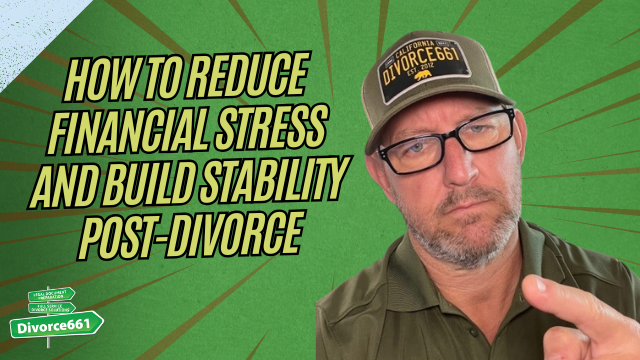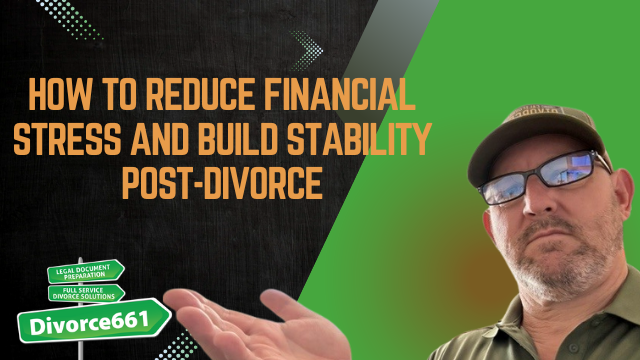How to Budget for Unexpected Costs After Divorce
Hi, I’m Tim Blankenship from Divorce661. In the video I shared a simple, practical approach to handle those surprise expenses that show up after a divorce—things like emergency medical bills, car repairs, or sudden school costs for the kids. You can set up a budget that absorbs these shocks without derailing your financial progress. Below I walk through the same steps I recommend for clients, plus an easy action plan you can start implementing today.
Why unexpected costs matter after divorce
After a divorce, your household finances often change dramatically—one income instead of two, different tax situations, new child-related expenses, and separate housing costs. Those changes make unexpected expenses more disruptive. Without a plan, a single surprise bill can force you into debt or wipe out months of careful budgeting. The goal is to build a buffer into your monthly plan so life’s surprises don’t send you backward.
Step 1 — Reassess your monthly income and expenses
Begin with a fresh look at your cash flow. Track all sources of income and list every monthly expense, including those that are irregular (quarterly insurance, school fees, annual memberships). Knowing your baseline is essential for carving out room for unplanned costs.
- List net monthly income (after taxes and mandatory deductions).
- List fixed expenses (rent/mortgage, utilities, insurance, child support).
- List variable/irregular expenses (groceries, car maintenance, school fees).
- Calculate the gap between income and expenses and identify where you can adjust.
Step 2 — Build a “life happens” buffer
Create a dedicated, short-term savings bucket for one-off surprises. I call this a “life happens fund”—separate from a long-term emergency fund. Even small, consistent contributions make a big difference.
“Even if it’s just $100 a month, building a buffer gives you peace of mind and helps you avoid going into debt when something comes up.”
Tips for building the buffer:
- Automate transfers: Set up an automatic monthly transfer right after payday so saving happens without thinking about it.
- Start small and scale: If $100 is all you can do now, start there. Increase the amount when your budget allows.
- Keep this fund accessible: Use a savings account that’s easy to access for one-off costs but separate from your checking to avoid accidental spending.
Step 3 — Prioritize flexibility in your budget
Flexibility is your financial superpower after divorce. Trim non-essential fixed costs so you have room to absorb variable expenses as they arise. Review subscriptions and recurring services and cut those you no longer use or need.
- Reduce or eliminate low-value subscriptions and memberships.
- Keep a small cushion in checking for day-to-day variability.
- Shift discretionary spending into a “flex” category you can tighten when a surprise expense appears.
Real client example: small changes, big relief
We worked with a client who felt she could never get ahead after her divorce. Each month a new surprise would throw her off track—car repairs, school costs, medical bills. Once we helped her build a small buffer and automate her savings, she stopped feeling overwhelmed. When her car broke down, the fund covered the repair. When a school expense popped up, she used the cushion rather than charging it to a credit card. That consistency gave her confidence and control.
How I help at Divorce661
At Divorce661, we do more than file divorce paperwork. We help you plan for life after divorce so you can move forward with financial stability. That includes:
- Post-divorce budgeting tailored to your new household.
- Creating emergency and short-term “life happens” funds.
- Practical steps to increase flexibility in your monthly spending.
Simple checklist to get started this week
- Record your net monthly income and all expenses.
- Identify one subscription or fixed cost you can reduce or cancel.
- Set up an automatic monthly transfer to a separate “life happens” savings account—even $50–$100 will help.
- Keep a $500–$1,000 checking/savings cushion as a short-term goal, then build toward 3–6 months of expenses for a long-term emergency fund.
- Review and adjust every 3 months or after significant life changes.
Conclusion — move forward with confidence
Unexpected costs don’t have to derail your financial recovery after divorce. By reassessing your cash flow, building a dedicated “life happens” buffer, and prioritizing flexibility, you can handle surprises without falling back into debt. Small, consistent changes give you real peace of mind.
If you want help creating a practical post-divorce budget that accounts for the unexpected, visit Divorce661.com to schedule a free consultation. I’ll help you take control of your finances and build the flexibility you need to move forward with confidence.










